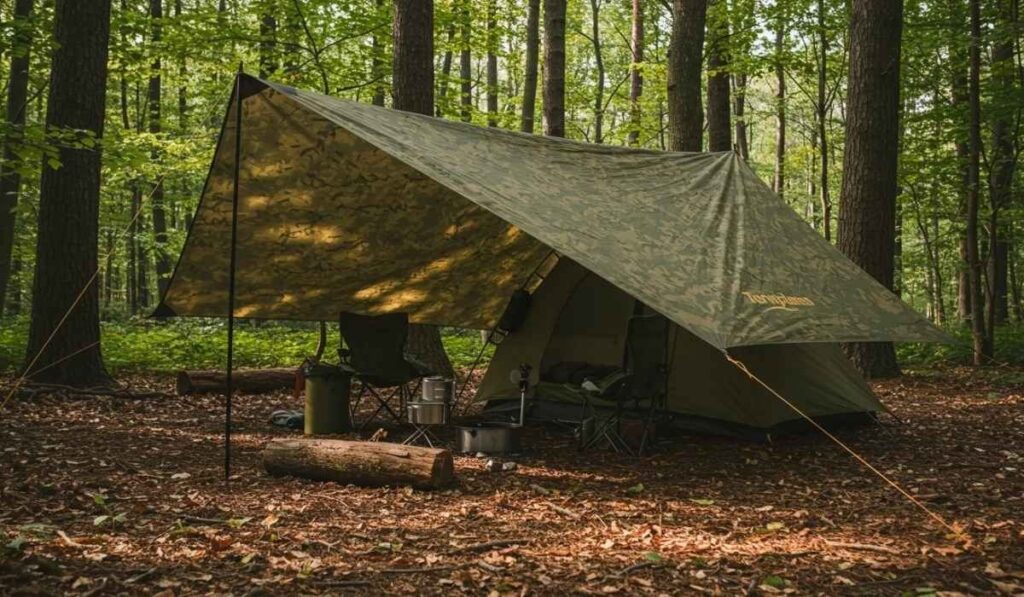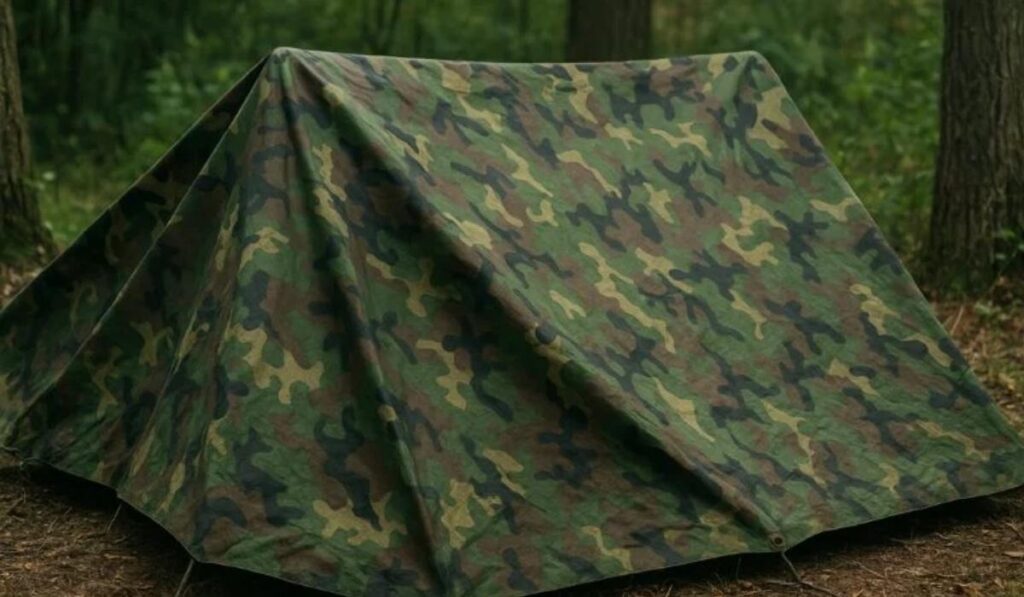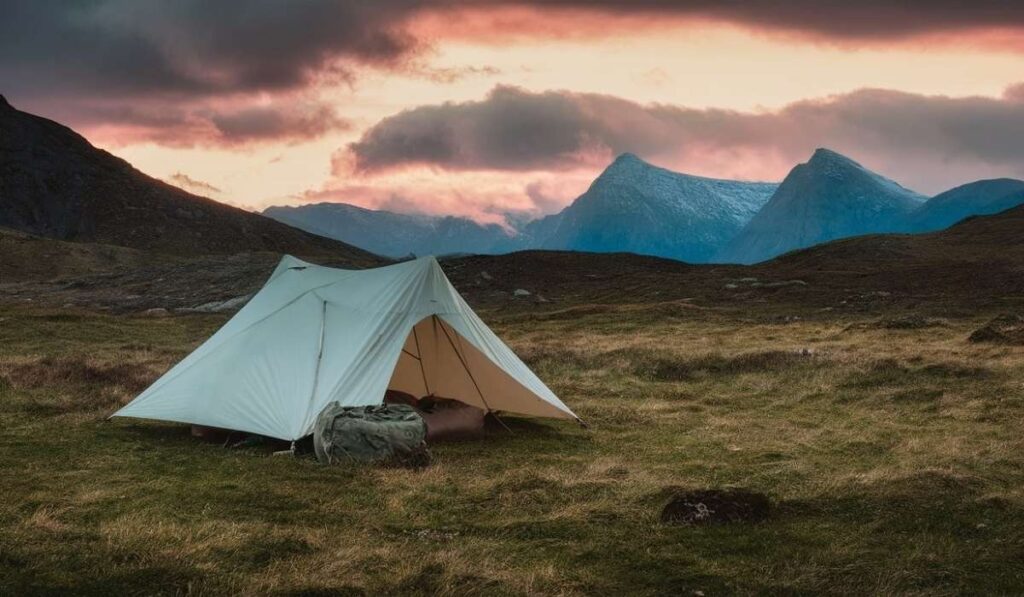Travel
Tarnplanen Guide: Best Camouflage Tarps for Strong Outdoor Protection

Outdoor enthusiasts, campers, hunters, and adventurers understand the value of reliable gear. Among the most versatile and essential items for outdoor activities are Tarnplanen, or camouflage tarps. These tarps are more than simple coverings; they serve multiple functions, from providing protection against harsh weather to offering concealment in natural surroundings. Choosing the right can enhance outdoor safety, increase comfort, and ensure preparedness for unpredictable conditions. This guide explores what are, why they are important, how to select them, and practical tips for their use.
What Are Tarnplanen
Tarnplanen are high-quality camouflage tarps designed to blend into natural environments while offering durable protection. The term originates from the German word “Tarn,” meaning camouflage, combined with “Planen,” meaning tarps. Unlike ordinary tarps, are specifically manufactured to offer concealment as well as functionality. They are commonly used by hunters to cover equipment, by campers to create temporary shelters, and by outdoor professionals for gear protection. Their key features include water resistance, UV protection, tear resistance, and lightweight construction, which allows for easy transportation and rapid deployment.
Key Benefits of Using Tarnplanen

The advantages of using Tarnplanen extend far beyond simple protection. Their camouflage patterns allow them to blend seamlessly into forests, mountains, deserts, or even urban settings where discretion is required. are also highly versatile. They can be used to create temporary shelters, ground covers, emergency rain protection, or even as makeshift carry bags for gear. Durability is another important benefit, as high-quality tarps can withstand wind, rain, and rough surfaces for extended periods. Moreover, their lightweight and compact design makes them easy to carry on long treks, reducing the burden for outdoor adventurers.
Material and Construction Considerations
When choosing Tarnplanen, the construction material plays a crucial role in performance. Polyethylene is a popular choice due to its waterproof properties, affordability, and lightweight nature. However, it is less durable and can tear under heavy use. Nylon and polyester tarps are stronger, often coated with polyurethane or other protective layers to improve water resistance and UV protection. The weave and thickness of the fabric also influence durability, tear resistance, and overall lifespan. Reinforced grommets, strong seams, and double-layered edges further enhance the utility of, making them suitable for harsh outdoor conditions.
Types of Tarnplanen and Their Uses

Tarnplanen come in various designs, each optimized for different outdoor applications. Some are lightweight, foldable, and ideal for backpacking, where portability is critical. Others are heavy-duty and intended for long-term outdoor protection, such as covering vehicles, hunting blinds, or camping areas. Camouflage patterns also vary, from forest green and woodland designs to desert and urban camo, allowing users to choose the pattern that best suits their environment. Choosing the right type depends on the specific needs of the user, including the level of concealment required, expected weather conditions, and portability.
Tips for Selecting the Right Tarnplanen
Selecting the right Tarnplanen requires careful consideration of several factors. First, the intended use is paramount; a tarp for temporary shelter may not require the same durability as one covering heavy equipment. Second, material quality and construction features such as reinforced grommets, stitched edges, and water-repellent coatings should be assessed. Third, size and portability matter. Larger tarps offer more coverage but are heavier and bulkier, while smaller tarps are easier to carry but provide limited protection. Finally, the camouflage pattern should be chosen according to the environment to maximize concealment and safety.
How to Properly Set Up Tarnplanen

Proper setup of Tarnplanen ensures maximum protection and longevity. Most tarps can be tied using ropes, bungee cords, or tent stakes, depending on the terrain. It is important to secure corners firmly to prevent flapping in the wind, which can cause damage over time. For temporary shelters, creating a taut ridge line helps rainwater slide off instead of pooling, which preserves the tarp material. Additionally, Tarnplanen can be layered over other tarps or integrated into existing tents or structures for enhanced protection. Understanding proper setup techniques significantly increases the utility of these camouflage tarps.
Maintaining and Storing Tarnplanen
Maintaining Tarnplanen extends their lifespan and ensures consistent performance. After use, tarps should be cleaned to remove dirt, mud, and moisture. Mild soap and water are typically sufficient, avoiding harsh chemicals that can damage protective coatings. Drying completely before storage prevents mold and mildew growth. Tarps should be folded or rolled loosely and stored in a dry, cool place away from direct sunlight. Inspecting for tears, frayed edges, or damaged grommets before storage allows for timely repairs and ensures readiness for the next adventure.
Common Outdoor Applications of Tarnplanen

Tarnplanen serve multiple practical applications beyond concealment and protection. Hunters use them to cover blinds or create hiding spots, ensuring minimal disturbance to wildlife. Campers use them as ground covers to prevent moisture seepage from the ground or as overhead shelters during rain. They can also protect vehicles, boats, and gear stored outdoors for extended periods. Emergency responders and survival enthusiasts find them invaluable for creating temporary shelters, signaling areas, or even as windbreaks. Their versatility makes them an essential tool for anyone spending time outdoors.
Choosing the Right Tarnplanen for Your Needs
Selecting the ideal Tarnplanen requires matching features to specific requirements. Consider factors such as size, weight, durability, weather resistance, and camouflage pattern. Evaluate how often the tarp will be used, the environmental conditions it will face, and the level of concealment necessary. Investing in a high-quality tarp may cost more initially but ensures long-term reliability, reduces the risk of damage, and enhances outdoor safety. Reading reviews, consulting experts, and physically inspecting the tarp before purchase can provide additional confidence in your selection.
Conclusion
Tarnplanen are indispensable tools for outdoor enthusiasts seeking protection, versatility, and concealment. With proper selection, setup, and maintenance, these camouflage tarps can significantly improve the safety and comfort of outdoor activities. Whether used for hunting, camping, or emergency situations, Tarnplanen combine practicality with durability, making them one of the most valuable pieces of gear for any adventure. Prioritizing quality materials, appropriate size, and the right camouflage pattern ensures optimal performance and long-lasting use.
Frequently Asked Questions
1. What is the main purpose of Tarnplanen?
- Tarnplanen are primarily used for protection and concealment in outdoor environments. They shield equipment, create temporary shelters, and help blend into natural surroundings for safety and discretion.
2. Which material is best for Tarnplanen?
- Nylon and polyester with waterproof coatings are generally the most durable options. Polyethylene is lightweight and water-resistant but less durable. The choice depends on intended use and environmental conditions.
3. Can Tarnplanen be used in all weather conditions?
- Yes, high-quality Tarnplanen are designed to withstand rain, wind, and sun exposure. Waterproof coatings, reinforced seams, and durable material make them suitable for most outdoor conditions.
4. How do I set up Tarnplanen for shelter?
- Secure the corners with ropes, stakes, or bungee cords. Create a taut ridge line to allow rainwater to run off, and ensure corners are firmly tied to prevent flapping in the wind.
5. How should Tarnplanen be maintained and stored?
- Clean the tarp after use, dry it completely, and inspect for any damage. Fold or roll loosely and store in a dry, cool place away from direct sunlight to prevent deterioration.









